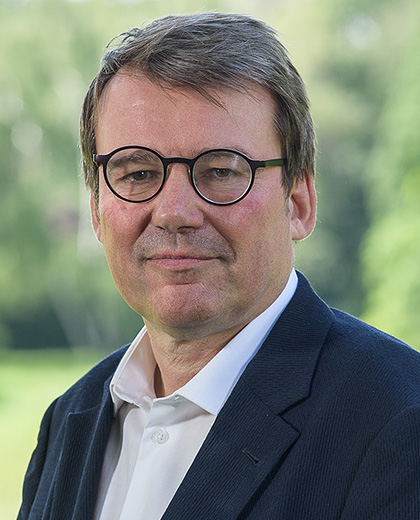26. January 2018 | International Labour Markets
The flow of migrants to Germany and their integration into the labour market

In fact, the migration phenomenon is rooted in much wider developments: for the last decade, Europe has been – alongside the US – the most important target region for immigration in the developed world. During the early 2000s, migration flows were initially observable in Spain, Italy, Ireland and the United Kingdom, whereas Germany remained relatively unaffected – not least for economic reasons. With the global financial and economic crisis and its ensuing asymmetric effects on Eurozone countries, the situation has drastically changed. Since then, Germany has not only recovered from the crisis faster than other countries, but it has become quantitatively the most important destination country for immigration within Europe in absolute terms.
European sources for immigration flows to Germany
This immigration derives from two sources: first, immigration from the Member States of the European Union (EU), especially from the new Member States and Eastern Europe. The financial and economic crisis has diverted migration flows away from old destination countries such as Spain, Italy and Ireland into Germany. The end of Germany’s transitional period for implementing the free movement of workers has fuelled this process.
Immigration from crisis countries
The second source is the refugee migration from crisis regions in the Middle East, Afghanistan and the Horn of Africa to Europe – and especially to Germany. Triggers for forced migration include an increase in violent conflicts; political persecution in the countries of origin; and the deterioration of living conditions in the neighbouring countries of these regions, which still host the majority of refugees. As the data shows, this process began a long time before the German federal government decided, on the night of September 5th 2015, to receive refugees who had arrived in Hungary into Germany. Since the height of the flow of forced migration into Germany the number of arrivals has fallen sharply. Following the closure of the Balkan route and the EU’s Agreement with Turkey, in particular, the immigration of refugees dropped to a fraction of the level witnessed in 2015. The EU-Turkey-Agreement curbed refugee migration substantially since the Turkish government enforced effectively controls which prevented the crossing of the borders to EU countries by land and sea and, moreover, allowed returning refugees who arrived in Greece back to Turkey. Of course, nobody can predict how political conditions for migration will change in future. At present one can assume that the external borders of the EU are largely closed to the immigration of refugees, although globally the number of refugees continues to rise due to persistent wars and other conflicts.
Qualification of new immigrants
The integration of refugees and other migrants is not solely – but nevertheless substantially – dependent on their level of education and professional qualifications. The long-term trend is that the qualification levels of new immigrants to Germany have risen, with a current peak being reached in 2010. However, the qualification structure of migrants differs greatly from that of the average resident population in Germany: on the one hand, new immigrants hold a much higher proportion of university degrees than the resident population. On the other hand, the proportion of newcomers holding vocational qualifications is much lower than that of the German population, and the proportion without vocational training is much higher. This trend is due to two factors. First, the education systems of most countries of origin differ from the education system in Germany. A dual vocational training system is unknown in most countries of origin, so that there are many more people either studying at university or acquiring their vocational qualifications through continuous training on the job, without these skills being certified through formal education. Secondly, the international mobility of people with a university education is much higher than that of other qualification groups, which is reflected in the high numbers of immigrants holding tertiary qualifications relative to the home population.
Reasons for lower qualification levels among refugees
On average, refugees have lower levels of general and vocational education than other migrant groups. The levels of general education are strongly polarized: a fairly high proportion has attended or completed upper secondary school, but there is also a high proportion who have only attended primary school or have no school education at all. Just under a third have attended university or started a vocational education; a fifth have completed higher education. There are several causes for this: protracted wars, civil wars and other violent conflicts contribute to a marked reduction in educational opportunities. The same applies to ethnic and religious minorities whose access to educational institutions has often been denied. But quality levels of educational systems, especially a lack of vocational training systems, also play an important role. Survey results show that about two-thirds of refugees in Germany want to gain educational qualifications. Even if these aims were only partially realised, it would lead to an improvement of the educational level of refugees settled in Germany in the medium term.
Integration of migrants into the German labour market
The integration of all migrants into the labour market takes time. Employment rates increase with the length of stay and eventually approach similar levels to those of the local population. The same applies to levels of pay. Thus, about ten years after arrival, 70 percent of the migrants are employed; and after ten years in employment in Germany, median earnings will have reached 90 percent of the median earnings of the German population.
Integration of refugees into the German labour market
The labour-market integration of refugees takes longer on average than that of other migrants. This is not surprising, given that they often have much larger legal and other institutional hurdles to overcome. In addition, they are usually worse prepared for immigration to Germany. In previous years, about 50 percent of the refugees were in work five years after arrival; ten years after arriving, their employment rate was about 60 percent. The average earnings of refugees after ten years of employment in Germany reach around 80 percent of the average earnings of the German population. A recent survey of refugees who immigrated to Germany between 2013 and the beginning of 2016 suggests that a similar trajectory can be expected for the newer cohort of refugees. Overall, it is clear that the labour market integration of refugees presents a larger challenge than the integration of other migrant groups, even if the employment- and wage levels of refugees are also clearly increasing over time.
Conclusion and outlook
The sharp rise in migration to Germany represents a significant economic and societal challenge. The IAB has been following these processes for a long time and has built a set of data infrastructure (including the ‘IAB-SOEP migration sample’ and the ‘IAB-BAMF-SOEP survey of refugees’), through which these processes can be systematically analysed. The IAB will continue to research and analyse the migration and integration of migrants in Germany and other countries in future.
Authors:
- Herbert Brücker

 Prof. Dr. Herbert Brücker is Head of the Research Department for Migration, Integration and International Labour Studies at IAB.
Prof. Dr. Herbert Brücker is Head of the Research Department for Migration, Integration and International Labour Studies at IAB.